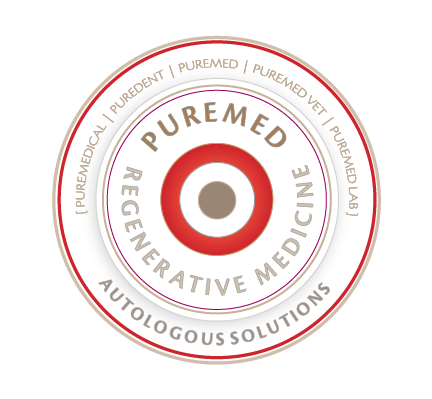Pure | Wound healing for Veterinarians
Chairside access to the patients healing potential from venous blood
The components of successful wound healing
The vital elements in any successful wound healing or grafting situation, is the management of the inflammation process, control of fibroblast activity and epithelialization, and the orchestration of neovascularization.
This management task can successfully be performed by using autologous cells collected from sources like the bloodstream, bone marrow, and adipose tissue.
At Puremed our wound healing portfolio is focused on
- Blood-derived cells following the PRF protocol
- Adipose-derived Stem cells Point-of-Care
PRF: Focus on neovascularisation and
modulation of the immune response

By using Platelet-Rich Fibrin you gain a large amount of naturally-activated platelets and leukocytes in a fibrin matrix, which in addition to encapsulating the cells, also acts as a scaffold for surrounding and recruited cells to invade, thereby allowing for a slow release of growth factors over time and the regeneration of damaged tissue by the relevant cells.
From chronic to an acute state
PRF, thereby, allows for the transition from a chronic inflammatory state, to an acute inflammatory state, similar to one found in wounds after a recent trauma, and further direct the wound healing process into the proliferative state.

ADSC´s: Focus on stem cells, fibroblast, speed, and simplicity

The ADSCs fulfill the need for modulating immune response by secretion of anti-inflammatory paracrine factors15, 17, 18, 22, 26, 27; the management of fibrosis by controlled inhibition of fibroblast proliferation and activity; and promotion of angiogenesis by readily differentiating into tissue-specific and progenitor cells (including pericytes and endothelial cells), as well as releasing pro-angiogenetic and anti-apoptotic growth factors, facilitating the recruitment of endothelial progenitor cells into newly sprouting vessels.














